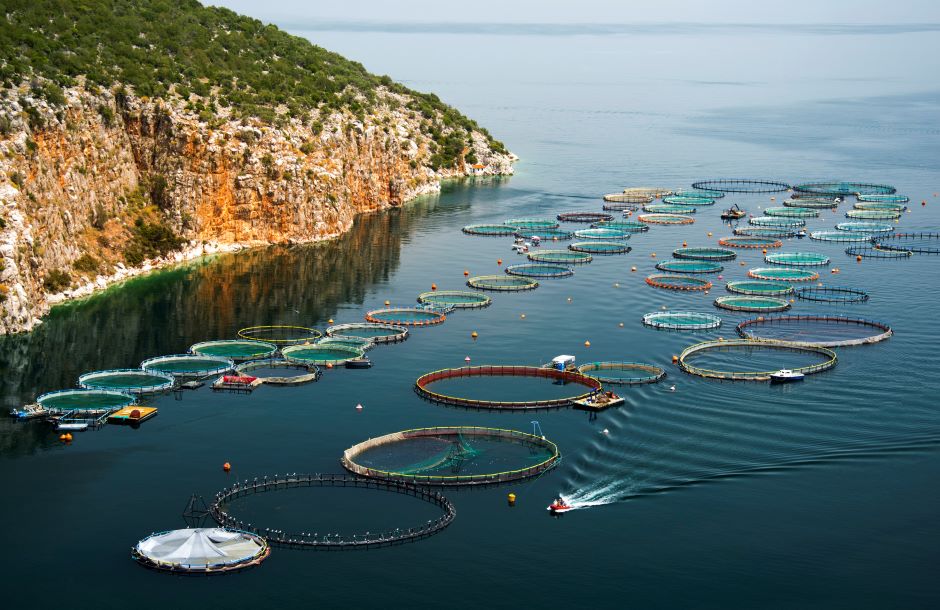How Fish Escape Aquaculture Facilities
 Fish farm in Saronic Gulf (Credit: Artur Rydzewski via Flickr / CC-BY 2.0))
Fish farm in Saronic Gulf (Credit: Artur Rydzewski via Flickr / CC-BY 2.0))Closed aquaculture facilities have great potential for managing and farming resources in a controlled environment. However, aquaculture managers face a line of risks to manage, assess and mitigate daily. Some of these risks include disease transmission, population management and dealing with fish escaping. Disease outbreaks and population management are part of the day-to-day operations of fish farms. However, being the cause of the invasion of a new species is typically the result of accidents wherein the farmed fish makes a daring escape into the surrounding waterway.
How Fish Escape From Aquaculture Facilities
A 2020 article published in Global Ecology and Conversation states that some incidents that lead to fish escaping from aquaculture farms are technical and operational failures of farming equipment. These internal causes often result from the structural failure of containment equipment like nets. The article, written by Javier Atalah and Pablo Sanchez-Jerez, continues to explain that net failures can occur in many ways, “including biting by caged fish, abrasion, holes caused by wear and tear of the netting and operational accidents.”
Fish may also escape as a result of external causes. These escapes are often a result of weather conditions or other environmental conditions. Predators outside the fish farms can also impact equipment’s structural integrity and lead to escapes by biting at netting to reach the farmed fish. Despite being an accident and often not the fault of facility management, escapes can be detrimental when the wrong species gets away.
The History of Fish Escaping from Fish Farms
One of the most famous escapees includes Asian carp in the Mississippi River Basin, which quickly spread throughout the basin. Not all escapes have led to an immediate takeover; some have had no major impacts or at least no known major impacts. One example of a case with no reported issues was the escape of thousands of Cobia from an aquaculture facility in Ecuador in 2016. The escapees successfully migrated all the way up to Panama with concerns that the fish would make it to the West Coast of the U.S.
The concern arose as the arrival of a new species in the region could upset the aquatic food chains and broader ecosystems they inhabit. Experts at the time believed that there was about a 50-50 chance that the fish would reach California. If such an incursion were to happen, it would mark the first time that a large and voracious non-native species hit waters off Southern California, scientists say.
As for the impacts—predictions were a bit less specific. Cobia fish are generalists, meaning they eat lots of things and could very easily compete for food with native species like yellowtails and kelp bass. Fortunately, there haven’t been any reports of the Cobia being found along the coast thus far, meaning the region is safe from any related disruption for now.
Conclusion
Regardless of the results, anytime an aquaculture facility faces losses from non-native fish escaping, surrounding areas are put on the defensive of managing a potentially new and invasive species. In order to avoid this, it’s important for aquaculture managers to monitor confinement equipment and build facilities that can withstand external conditions. Using underwater cameras is one way managers can keep an eye on their stock and the state of equipment.


Pingback: FishSens Magazine | Proposed Net-Pen Aquaculture Facilities in Michigan - FishSens Magazine